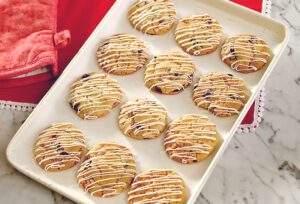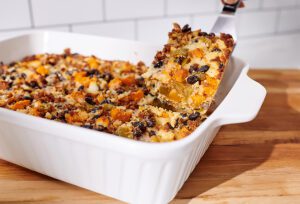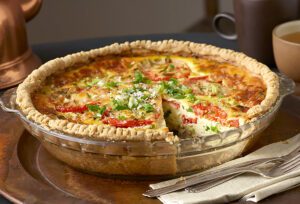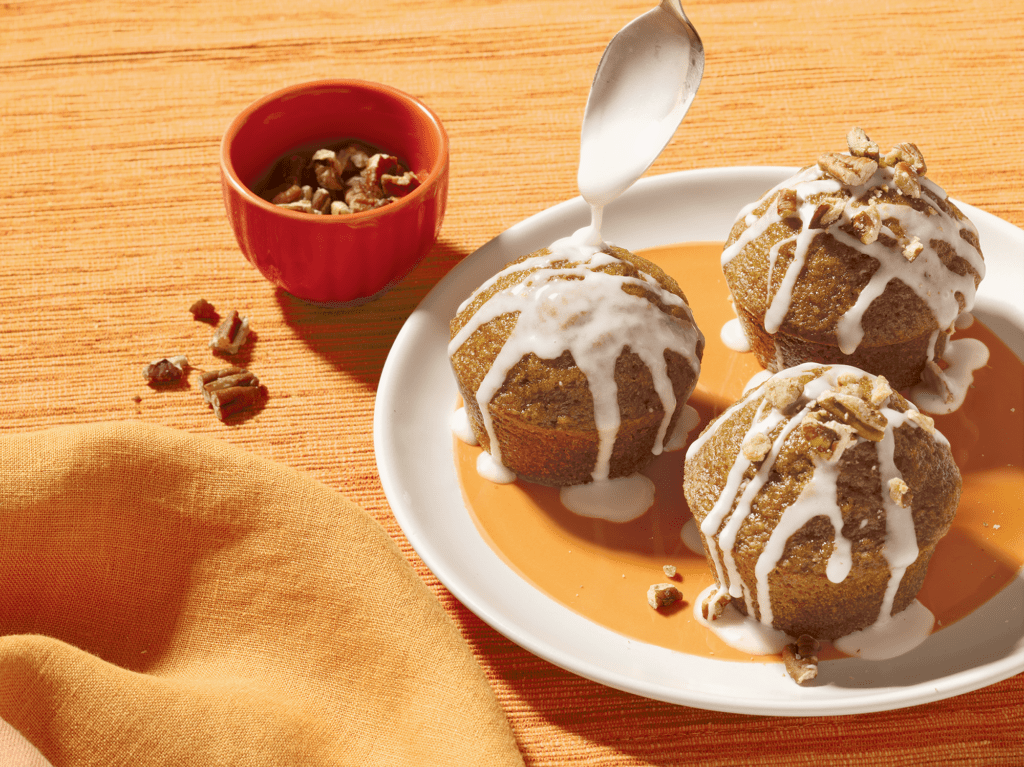Are you ready to take your baking to the next level? Whether you’re a first-time baker or simply looking to refresh your bakeware collection, the right pans can make a world of difference in the quality and ease of your baking. Selecting the perfect pan is not just about choosing something that looks nice; it’s about understanding how different types of bakeware can influence your baking results. From getting that perfect rise in your cakes and cupcakes to achieving a crispy pizza crust, the pan you use plays a crucial role.
In this guide, we’ll walk through the essential bakeware every baker should have, from trusty sheet pans to specialty Bundt pans. By understanding the materials, sizes, and uses of these pans, you’ll be well-prepared to bake with confidence. Let’s dive into the world of bakeware and discover the best pans for every baking task!
Sheet Pans

Sheet pans, also known as cookie sheets or baking sheets, are a staple in any kitchen. Typically available in half-sheet (16×12 inches) and quarter-sheet (12×8 inches) sizes, these versatile pans are perfect for a variety of baking tasks. They feature low, straight sides to promote even heat distribution and provide easy access to your baked goods. The most common materials for sheet pans include nonstick coatings for effortless release and cleanup, and anodized aluminum for its excellent heat conductivity and durability.
What Can You Make With Sheet Pans?
- Cookies: For example, our Triple Chocolate Chunk Cookies bake beautifully on a sheet pan, thanks to its even surface that helps ensure uniform browning.
- Sheet Pan Pancakes: A fun way to make pancakes for a crowd. Just pour your batter on the sheet pan and bake. Top with blueberries, chocolate chips, fried apples, and more.
- Roasted Vegetables: Try roasting brussel sprouts, green beans, or even broccoli and cauliflower. The high heat conductivity of sheet pans ensures that vegetables roast evenly, and the low sides allow for easy tossing and turning, letting all sides cook to perfection.
- Baked French Fries: Cut potatoes (or sweet potatoes) into fries, season, and bake on a sheet pan for homemade fries.
Baking Pans

Baking pans are the workhorses of the kitchen. Whether you’re whipping up brownies, casseroles, or lasagna, these pans are designed to handle it all.
Baking pans come in various shapes and sizes, designed to handle an array of recipes from sweet to savory. The most common are rectangular (9×13 inches), square (8×8 inches or 9×9 inches), and round shapes, with depths ranging from 2 to 3 inches. Materials vary from aluminum and stainless steel to glass, each offering unique benefits such as heat conductivity, durability, or visibility for checking doneness. If you’re using glass or ceramic baking pans, you may need to extend the baking time of what you’re making by about five minutes.
What Can You Make With Baking Pans?
- Brownies and Bars: Baking pans are perfect for creating evenly baked brownies and bars, like our Cherry Filled Lemon Bars. The rectangular shape allows for easy cutting into uniform pieces.
- Cakes: These pans are excellent for single-layer cakes and coffee cakes, like our Cinnamon Swirl Coffee Cake. The depth of the pan ensures your cakes rise beautifully without spilling over.
- Casseroles and Lasagnas: The deeper sides make baking pans ideal for lasagnas and hearty casseroles, like our Bacon, Cheddar and Egg Casserole. The even heat distribution helps cook everything thoroughly, ensuring each layer is perfectly done.
- Roasts and Bakes: Beyond desserts, baking pans are great for roasting meats, vegetables, or making savory dishes like baked pasta or gratins.
Round Cake Pans

Round cake pans are a staple in any baker’s toolkit, essential for creating everything from simple birthday cakes to elaborate layered masterpieces. Their straightforward design and reliable performance make them indispensable for any cake-baking adventure.
Round cake pans come in various sizes, typically ranging from 6 inches to 10 inches in diameter. The most common sizes are 8-inch and 9-inch pans, ideal for standard layer cakes. Round cake pans are available in nonstick finishes for easy release, and in materials like aluminum or steel for even heat distribution. Some high-end options include anodized aluminum, which offers superior heat conductivity and durability.
What Can You Make With Round Cake Pans?
- Layer Cakes: The classic use for round cake pans, allowing you to create multi-layer cakes with even, uniform layers. Whether it’s a simple vanilla cake made with our Vanilla Cupcake Batter, or a rich Chocolate Peanut Butter Swirl Cake, round cake pans help you achieve that perfect stack.
- Cookie Cakes and Bars: Round cake pans are perfect for baking cookie cakes and thick, chewy bars. The depth of the pan helps create a gooey center with slightly crispy edges, ideal for chocolate chip cookie cakes or decadent brownie bars.
- Casseroles: You can even use round cake pans to make your favorite casseroles, baked pastas, and more. Try using the small cake pans for individual-sized portions.
Muffin Pans

Muffin pans are an essential part of any baker’s collection, designed to create perfectly portioned, bite-sized treats. From breakfast muffins to decadent cupcakes, these pans make it easy to bake up a storm of deliciousness in no time.
The most common muffin pans have 12 cups, each about 2.5 inches in diameter. Smaller versions, like 6-cup pans, are perfect for half-batches, while mini muffin pans, with 24 smaller cups, are great for tiny treats.
Muffin pans are available in nonstick finishes for easy release, and in materials like aluminum, stainless steel, or silicone. Nonstick pans are popular for their convenience, while silicone options offer flexibility and easy cleanup. Aluminum pans are favored for their excellent heat distribution, ensuring even baking.
What Can You Make With Muffin Pans?
- Muffins: From classic Wild Blueberry to Banana Nut, muffin pans are perfect for baking fluffy, evenly cooked muffins. The individual cups ensure each muffin bakes consistently, with a golden crust and fluffy interior.
- Cupcakes: These pans are ideal for baking cupcakes, providing uniform size and shape, making decorating easier. Whether it’s vanilla, chocolate, or red velvet, muffin pans help you achieve bakery-quality cupcakes at home.
- Mini Quiches: Muffin pans can also be used for savory dishes like mini quiches. The individual portions are perfect for brunch or appetizers, offering a crispy crust and a soft, flavorful filling.
- Bite-Sized Treats: Use mini muffin pans to create small, bite-sized versions of your favorite recipes, like mini cheesecakes, brownies, or even savory snacks like meatballs or stuffed mushrooms.
Pie Pans

Pie pans are a must-have for anyone who loves baking pies, tarts, or quiches. Their unique design and specific characteristics make them essential for achieving the perfect pie crust and filling. Whether you’re a seasoned baker or just starting out, understanding the basics of pie pans can elevate your pie-baking game.
The standard size for pie pans is 9 inches in diameter, though 8-inch and 10-inch pans are also common. The size you choose affects the thickness of the crust and the amount of filling you can use. Pie pans typically range from 1.25 to 1.5 inches deep. A deeper pan is ideal for double-crust pies or pies with more filling, while shallower pans are great for tarts or single-crust pies.
Pie pans are available in a variety of materials, including glass, metal, and ceramic. Glass pans are popular for their ability to show the browning of the crust, metal pans offer quick and even heating, and ceramic pans retain heat well, which is great for serving.
What Can You Make With Pie Pans?
- Classic Fruit Pies: Whether it’s apple, raspberry, or peach, pie pans are perfect for baking classic fruit pies. The shape and size of the pan help create a beautifully even crust and filling.
- Other Pies: Pies like Lemon Meringue or Chocolate Chunk Peppermint are perfectly suited to pie pans, which help maintain the integrity of the crust while supporting a creamy, rich filling.
- Savory Pies and Quiches: Pie pans are ideal for savory dishes like quiches or pot pies. Their size and depth allow for a generous filling, and the pan’s shape supports a flaky, golden crust.
Loaf Pans

Loaf pans are a kitchen essential, especially if you love baking bread, quick loaves, or even savory dishes like meatloaf. Their unique shape and design make them ideal for creating baked goods with a uniform, easy-to-slice structure, ensuring consistent results every time.
The standard loaf pan sizes are 8.5×4.5 inches and 9×5 inches. The smaller size is perfect for quick breads and smaller batches, while the larger size is ideal for full-sized loaves and meatloafs. Loaf pans are typically 2.5 to 3 inches deep, providing the ideal height for a well-risen loaf. The depth of the pan helps in achieving that perfect dome shape on top of your baked goods.
Loaf pans are available in a variety of materials, including nonstick coatings, aluminized steel, and glass. Nonstick pans ensure easy release, while aluminized steel offers even heat distribution. Glass pans allow you to monitor the baking process, though they may require longer bake times.
What Can You Make With Loaf Pans?
- Bread: Whether you’re baking a classic white loaf, whole wheat bread, or a rustic artisan loaf, loaf pans provide the perfect structure and shape for slicing.
- Quick Breads: For quick breads like banana bread, zucchini bread, or pumpkin bread, loaf pans are ideal. Their high sides help achieve a well-risen top and a moist crumb.
- Meatloaf: Loaf pans are perfect for savory dishes like meatloaf, ensuring even cooking and easy slicing. The rectangular shape allows for even heat distribution and the high sides help retain moisture.
- Pound Cake: Loaf pans are also great for baking pound cakes, like our Vanilla Pound Cake. The pan’s shape ensures even baking and helps achieve a beautiful, golden crust.
Pizza Pans

If you’re a pizza lover, having a good pizza pan in your kitchen arsenal is a game changer. Pizza pans come in various styles, each designed to help you achieve the perfect crust and bake every time. Whether you prefer a thin, crispy crust or a thick, chewy base, the right pizza pan can make all the difference.
Pizza pans typically range from 12 to 16 inches in diameter, catering to personal-sized pizzas or larger, family-sized pies. Perforated pizza pans have small holes through the surface to allow air circulation, resulting in a crisper crust. Deep dish pans have high, straight sizes that help create thick, hearty crusts. Pizza stones, while not exactly a pan, are made from ceramic or stone and are known for mimicking the effects of a traditional pizza oven.
Pizza pans are commonly made from aluminum, steel, or cast iron. Nonstick coatings are also popular for easy release and cleanup. Some pans, particularly pizza stones, are uncoated to enhance their ability to absorb moisture and crisp the crust.
What Can You Make With Pizza Pans?
- Classic Pizzas: Whether you prefer a thin-crust Margherita or a fully loaded supreme, a standard pizza pan helps you achieve an even bake with a perfectly cooked crust.
- Deep-Dish Pizzas: For fans of thick, hearty pizzas, a deep-dish pan is essential. It supports the dense, layered structure of a Chicago-style pizza, ensuring the crust cooks through without burning the toppings.
- Flatbreads and Focaccia: Use your pizza pan to bake flatbreads or focaccia. The large, flat surface provides even heat distribution, giving these bread-based dishes a crisp exterior and soft interior.
- Pizza Rolls and Stromboli: Roll up your favorite pizza toppings in dough and bake them on a pizza pan for a fun, portable meal.
Bundt® Pans

Bundt® pans are more than just bakeware; they’re a gateway to creating cakes that are as visually stunning as they are delicious. With their distinctive shapes and intricate designs, Bundt pans bring a touch of elegance to your baking, turning ordinary cakes into centerpieces.
Bundt pans are easily recognizable by their ring-shaped design, featuring a central tube that creates a hole in the middle of the cake. They typically range from 6-12 cups in capacity. The most common size is the 10-12 cup pan, perfect for most Bundt cake recipes. Smaller pans, like 6-cup versions, are great for mini Bundt cakes or smaller servings.
Bundt pans come in a variety of intricate designs, from classic fluted patterns to more elaborate shapes like spirals, roses, or even seasonal motifs. These designs add a decorative element to your cakes without needing additional decoration.
What Can You Make With Bundt® Pans?
- Classic Bundt® Cakes: From Blueberry Lemon Pound Cake to Peanut Butter Fluted Cake, Bundt pans are perfect for creating cakes that impress with both flavor and appearance. The pan’s design gives the cake a beautiful shape, eliminating the need for elaborate decoration.
- Coffee Cakes: The ring shape of a Bundt pan is ideal for coffee cakes, allowing for even baking and easy slicing. The decorative design adds a special touch to these often simple cakes.
- Savory Bakes: Bundt pans aren’t just for sweet treats; they’re also great for savory dishes like pull-apart breads or molded casseroles. The pan’s shape allows for even cooking and a unique presentation.
- Gelatin Desserts: For a fun twist, Bundt pans can also be used to mold gelatin desserts or no-bake cheesecakes, where the intricate design adds visual appeal.
Tart Pans
Tart pans are a must-have for bakers looking to create elegant, professional-looking desserts with ease. Known for their distinctive fluted edges and removable bottoms, these pans are designed to help you achieve perfect tarts, quiches, and other baked creations.
Tart pans typically range from 4 to 12 inches in diameter, with 9-inch pans being the most common size for standard tarts. Smaller pans, often called tartlet pans, are perfect for individual servings. These pans are generally shallow, with depths around 1 inch, which helps create a delicate crust that bakes evenly and crisps up beautifully.
Tart pans are often made from materials like carbon steel, aluminum, or tin-plated steel, all of which provide even heat distribution. Nonstick coatings are popular for easy release, but traditional metal pans without a coating can also deliver great results, especially when well-greased.
What Can You Make With Tart Pans?
- Fruit Tarts: The classic use for tart pans, allowing you to create beautiful fruit tarts with a crisp, golden crust and a luscious filling. The fluted edges add an elegant touch to your presentation.
- Quiches: Tart pans are perfect for baking quiches, with their shallow depth and wide surface area allowing the filling to cook evenly. The removable bottom makes it easy to serve without worrying about breaking the crust.
- Custard Tarts: Whether it’s a traditional French custard tart or something more creative, these pans help achieve that perfect balance between a creamy filling and a crisp crust.
- Savory Tarts: In addition to sweet treats, tart pans are great for savory options like onion tarts, tomato tarts, or even a spinach and cheese quiche.
Equip Your Kitchen For Sweet Success
Selecting the right pans for your baking needs can make all the difference between a good bake and a great one. Whether you’re whipping up cookies on a trusty sheet pan, crafting a layered masterpiece in round cake pans, or impressing guests with a stunning Bundt cake, having the right tools in your kitchen is essential. With a variety of pans designed for different purposes, you’ll be equipped to tackle any recipe with confidence and creativity.
Ready to get started? Shop Krusteaz baking mixes and batters for delicious and easy-to-make treats, and don’t forget to explore our recipe library for more inspiring ideas to use with your bakeware.







